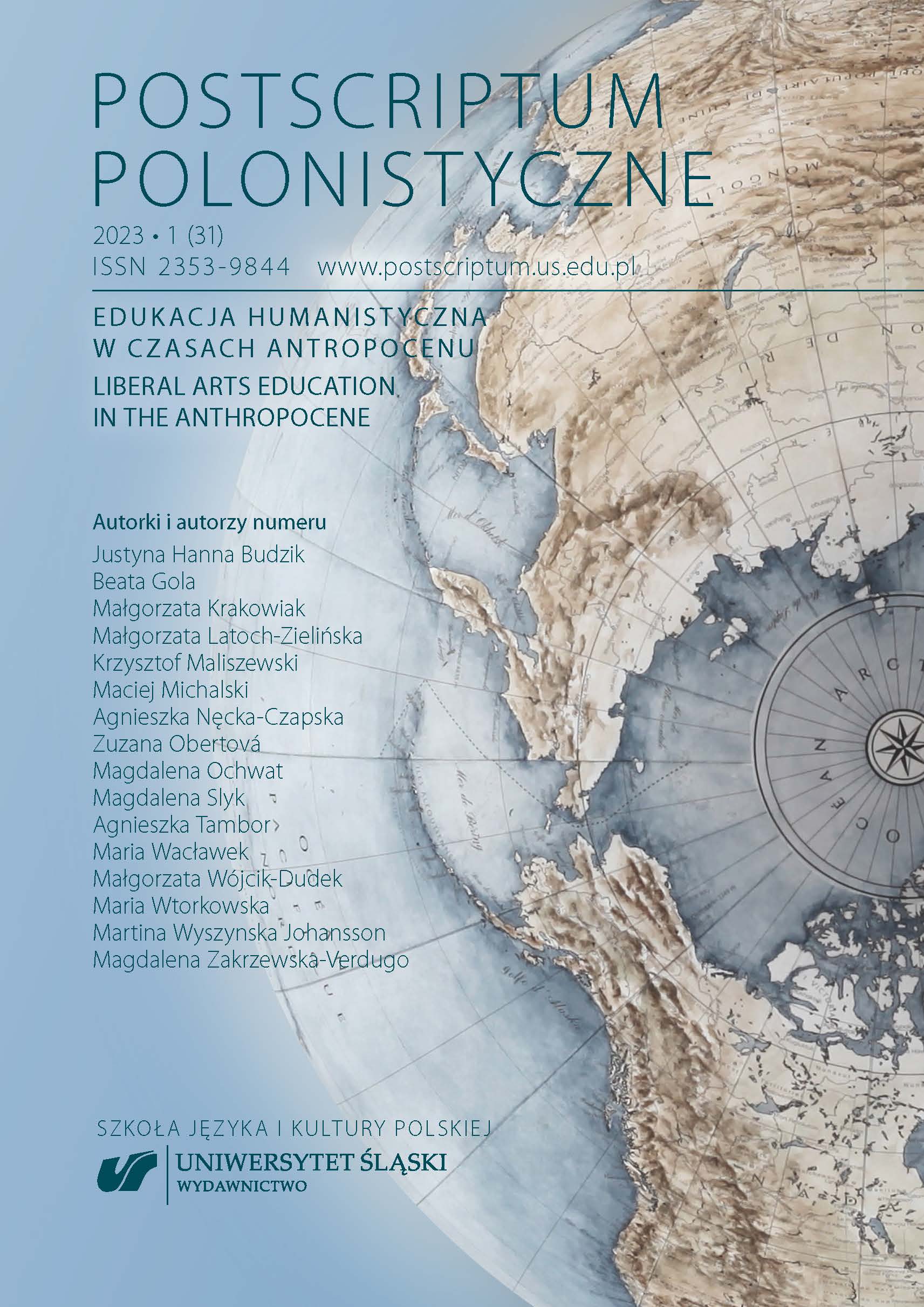Sposoby zapobiegania zespołowi deficytu natury na gruncie słoweńskim – przykłady dobrych praktyk
Methods of preventing nature deficit disorder in Slovenia: examples of good practice
Author(s): Maria WtorkowskaSubject(s): Language studies, Language and Literature Studies, Applied Linguistics
Published by: Wydawnictwo Uniwersytetu Śląskiego
Keywords: forest pedagogy; environmental education; nature deficit syndrome; Slovenia
Summary/Abstract: As a result of the development of technology, the universal availability of its gifts and their constant use in everyday life, wespend more and more of our free time in front of mobile phones, computers, and televisions than in the open air, on the lapof Nature. Lack of contact with nature – especially in children – can cause problems that are collectively referred to as naturedeficit disorder (Slovenian. motnja pomanjkanja narave). We are often unaware of the consequences of lack of contact withnature in the form various disorders, e.g., limitated use of the senses, difficulty concentrating, tendencies to gain weight andto suffer from physical and emotional diseases, insensitivity to issues related to environmental protection. In 2016, Ljubljana,a city that stands out in terms of economic growth, improving the quality of life of its inhabitants and protecting the environment,was awarded the title of European Green Capital by the European Commission. In her article, Maria Wtorkowska presentsselected methods of preventing disorders related to lack of contact with nature undertaken in Slovenia among preschool- andearly-school children. Wtorkowska discusses examples of good practice which are used, among other places, in the capital’skindergartens, including the kindergarten Outside the Castle (Pod gradom) in Ljubljana, located in the center of Ljubljana, andeffectively contribute to the prevention of disorders resulting from lack of contact with nature. She presents the activity offollowing institutions: the Institute of Forest Pedagogy (Inštitut za gozdno pedagogiko) and the Network of Slovenian ForestKindergartens and Schools (Mreža gozdnih vrtcev in šol Slovenije) and the Špelinice Education and Counselling Institution (Zavodza izobraževanje in svetovanje Špelinice), founded by educator and anthropologist Špela Klofutar, which conducts a numberof activities among nature with and for children, including Gozdne drobtinice, Naravoslovni nahrbtnik, Public Institution SmallStreet – Centre for Children and Families in Ljubljana (Javni zavod Mala ulica – Center za otroke in družine v Ljubljani) and itsforest paths (Gozdna pot). A person who from early childhood experiences the world of nature as a developmental space, willin their adulthood consider it essential in future life, which will result in care for the environment. Therefore, by introducingeducational programs in forest areas at the pre-school or early school stage, we prevent disorders caused by nature deficitmore effectively than when we struggle with them. As our experience repeatedly shows, prevention is better than cure.
Journal: Postscriptum Polonistyczne
- Issue Year: 31/2023
- Issue No: 1
- Page Range: 1-16
- Page Count: 16
- Language: Polish

